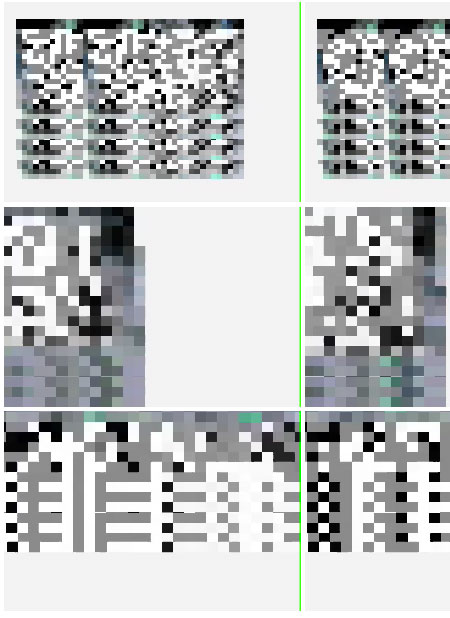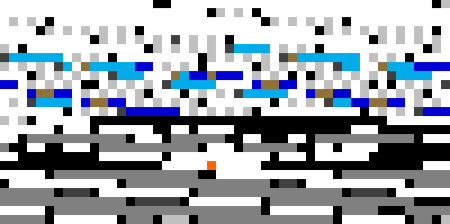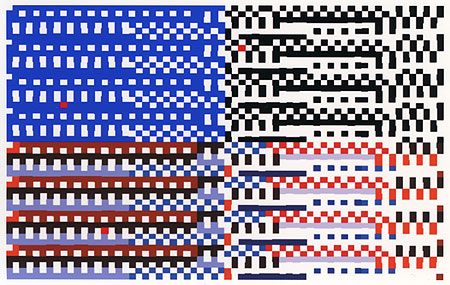
Petra Cortright, "Horizon Trackx"
In this rather stunning grid of Quicktimes from a larger project (above is a cropped screenshot of the page), artifacts from a rotating plane are enlarged, cropped, and presented side by side in multiple views, dissolving into randomness while suggesting larger things going on. Abstraction's ability to create a screen for projection and imagination makes it an exciting place to be working, as opposed to all the algorithms-with-obligatory-"political"-backstory that comprise so much XYZ new media art. It is not "formal"--one seriously doubts Cortright cares about practical Bauhaus laws of pictorial organization as ends in themselves; those are problems for the designers of the programs she uses. In fairness, the Quicktimes above occur within in a larger project that explores the dismantling and layering of built space(s), but the "big picture" is equally tantalizing and puzzling. The index for the entire piece is here.

Cortright's work echoes Cory Arcangel's "Data Diaries" project (screenshot above), and the flow of pages feels diaristic, but in Arcangel's case the flickering, seductive grids sprang from a paradoxically rational, deductive method--tricking Quicktime into reading a home computer's numeric (alphanumeric?) memory as images. Cortright's work is a more deliberately expressive and conscious page sequence, with each causal transformation yielding some new spatial contortion. Both bodies of work have the feeling of spelunking inner machine space and discovering a boundless world.

Another variant on the "pulsating pixel grid" is David Galbraith's work at Diapason (detail above scanned from ink jet print). Haven't seen it in person yet but it sounds intriguing. Like Arcangel's piece, which whirred and screeched like a CD-scratched fax machine, it has an audio component, in this case lock grooves triggered by the pixels:
lgOpre (luh - GOP - ruh)* is an audiovisual installation of multichannel sound and projected digital animation created with real-time software that links vintage grid pattern algorithms with vinyl record lock-groove samples. The software behind lgOpre, written by the artist, uses customized abstract image generation routines (c.1970), appropriated color schemes, and self-similar number patterns to create an animation that is also a visual controller for a modular digital sound studio. Each of the 34 grid pattern building blocks used for lgOpre is mapped to its own set of processed and unmodified lock-groove samples. The color of the underlying grid is used to select which sound will play as the basic grids from each animation frame are visually highlighted in turn for a determinate duration before advancing to the next frame. Aleatoric color scheme variants introduce a degree of chance to the sound-image mapping.
Compositionally, lgOpre first introduces each visual building block as a full-screen matrix using black and white, grayscale or a few saturated colors to create monochromes or relatively simple patterns accompanied by solo sound samples. The screen splits in half horizontally, then vertically, producing four quadrants with increasing pattern complexity. New color schemes and faster sequencing within a single animation frame trigger the look of blocky color video games or visualized computer core dumps and densely layered multichannel sound.*locked groove Open research.
Update: Another treatment of this theme comes from the perspective of appropriating pop culture and/or pseudoscience: Robert Wodzinski's animated gif made from 100 found color therapy swatches.
Update 2: pierre has a post about generating pixel grids [update: dead link], coming from a set theory perspective; he sees it as a diy project in computation rather than as an art project, per se, although the resulting patterns are nice to look at and certainly have some connections to gridmeisters John Simon and Manfred Mohr.
